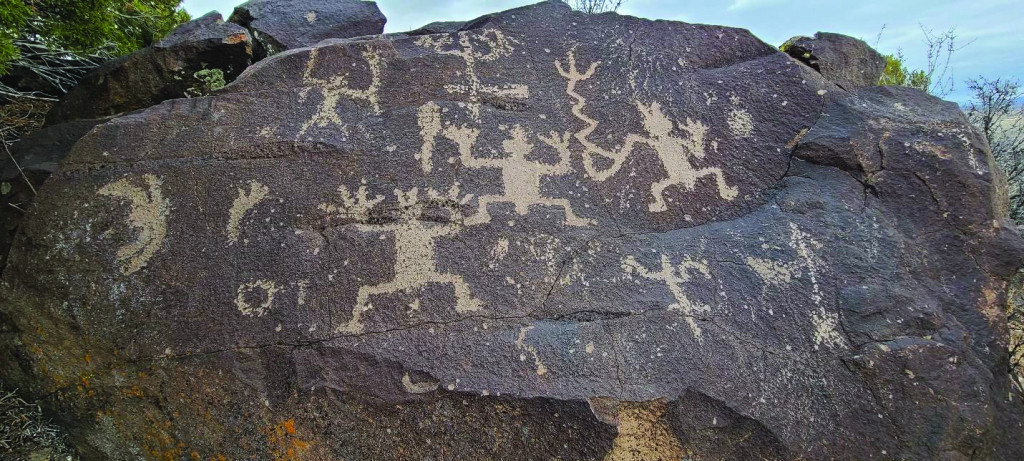Mesa Prieta contains one of the largest collections of petroglyphs in northern New Mexico, and with the generosity and support of our members, the Conservancy recently expanded its protection of this important cultural area with the purchase of the Cottonwood Petroglyph Preserve. This two-acre parcel is situated in a rural, residential area overlooking the Rio Grande about a half mile south of Wells Petroglyph Preserve. The site was purchased from landowner Debbie Boss, who inherited the site from her mother Nausika Richardson. Nausika was an artist who immigrated to the U.S. with her family from Greece in 1956 and landed in Dixon, New Mexico where she established herself as one of the major, modern ceramicists in the region. Debbie’s mother protected the property for nearly 40 years. Nausika died in 2011, and Debbie has carried on the preservation of the site. Now, The Conservancy will carry on this tradition in perpetuity.
In the early 2000s, the Mesa Prieta Petroglyph Project documented 111 images on this parcel, in addition to archaeological features such as rock gardens, grinding slicks, seasonal sun markers, and dual-ringed cupules. The panels were pecked with a hammerstone into the numerous basalt boulders that are characteristic of Mesa Prieta, featuring several recurring motifs possibly related to agriculture. These dark boulders are what give the mesa its shadowy appearance on the landscape and likely inspired its name, which translates to Black Mesa. The images at Cottonwood Preserve were created by the ancestors of the Tewa-speaking people. Mesa Prieta creates a dramatic backdrop to the modern Tewa Pueblo of Ohkay Owingeh a few miles away.




